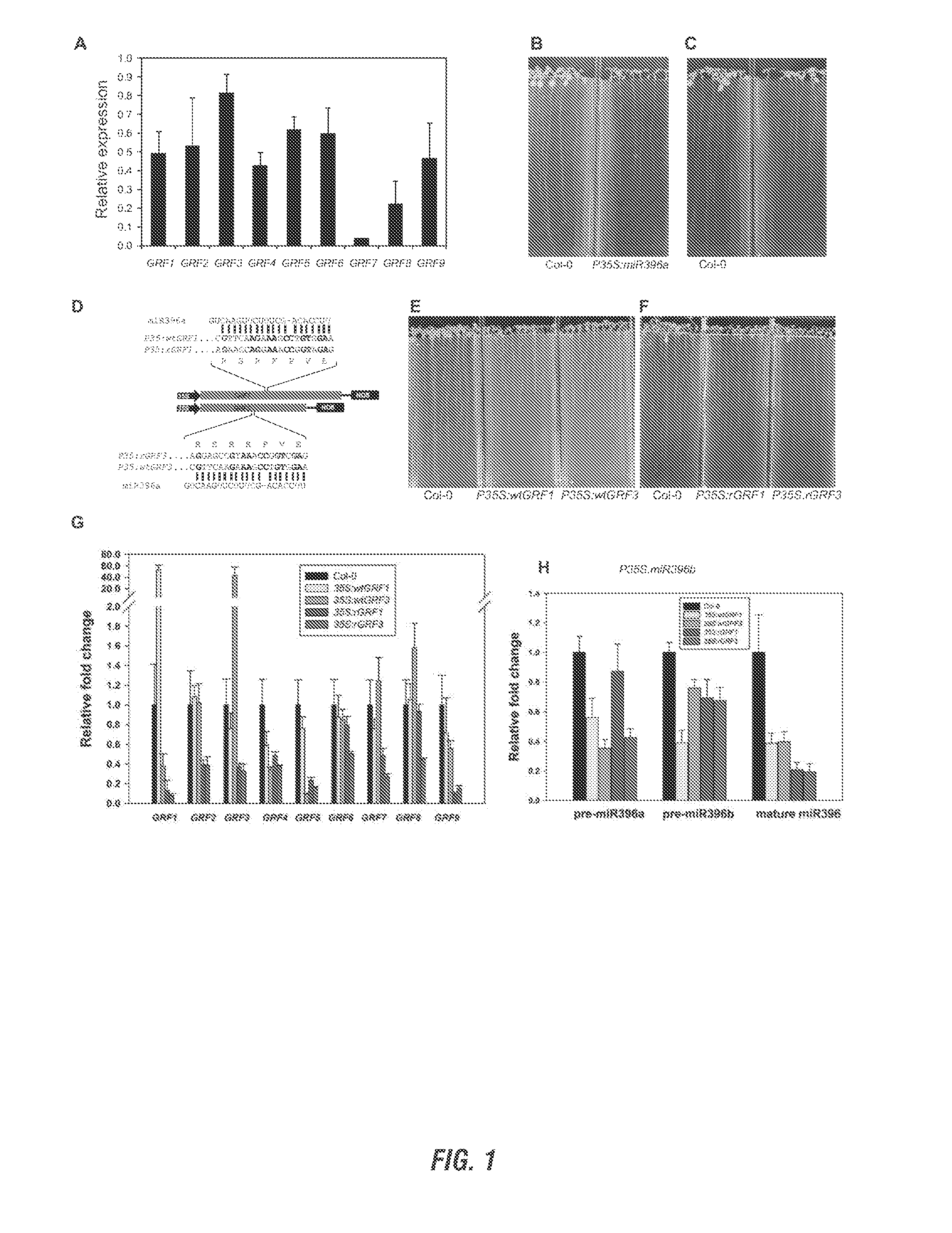miRNA396 AND GROWTH REGULATING FACTORS FOR CYST NEMATODE TOLERANCE IN PLANTS
a growth regulation factor and nematode technology, applied in the field ofmirna396, can solve the problems of poor understanding of the regulatory networks governing gene expression patterns in nematode-infected roots and particularly in the developing syncytium, difficult application, and high cost, so as to improve the performance and increase the root mass. , the effect of increasing the survival rate of the plan
- Summary
- Abstract
- Description
- Claims
- Application Information
AI Technical Summary
Benefits of technology
Problems solved by technology
Method used
Image
Examples
example 1
[0221]Pathogens alter their hosts' biology to ensure successful infection. Such modifications range from moderate to extensive, and in the case of plant pathogens, few infections result in more dramatic changes than those of sedentary endoparasitic nematodes, which include the cyst nematodes (Heterodera spp.). Maybe rivaled in complexity only by plant interactions with Agrobacterium and Rhizobia, cyst nematodes are obligate parasitic roundworms that induce the formation of novel plant cell types that are associated in a unique feeding organ, the syncytium.
[0222]Cyst nematodes infect as second-stage juveniles (J2), which initiate the induction / formation of the syncytium. During this phase, J2s begin feeding on the growing syncytium and then develop into third-stage (J3) and fourth-stage juveniles (J4) followed by the adult stage. Syncytium development can be separated into an induction / formation phase followed by a maintenance phase. Induction / formation involves effector-mediated com...
example 2
miR396 in Soybean During Cyst Nematode Infection
[0302]In order to understand the role that miR396 plays during soybean infection by the soybean cyst nematode (Heterodera glycines; SCN), expression analyses were performed on primary and mature sequences for all miR396 paralogs (miR396a, miR396b, miR396c and miR396e) and seven of its predicted target Growth Regulating Transcription Factors (GRF8, GRF9, GRF12, GRF13, GRF15, GRF16 and GRF19) using quantitative real-time PCR (qRT-PCR). Soybean seedlings were infected with SCN three days after germination and RNA was extracted 2, 4, 8 and 14 days post inoculation (dpi). RNA from both SCN infected and mock inoculated soybean seedlings was reverse-transcribed into cDNA for qRT-PCR.
[0303]Data were analyzed using the comparative Ct method with U6 snRNA as the reference gene for microRNA quantification and ubiquitin for GRFs. Significance tests were performed using the Student's t-test (p-value<0.05) and significant values are indicated on the...
PUM
| Property | Measurement | Unit |
|---|---|---|
| Electrical resistance | aaaaa | aaaaa |
Abstract
Description
Claims
Application Information
 Login to View More
Login to View More - R&D
- Intellectual Property
- Life Sciences
- Materials
- Tech Scout
- Unparalleled Data Quality
- Higher Quality Content
- 60% Fewer Hallucinations
Browse by: Latest US Patents, China's latest patents, Technical Efficacy Thesaurus, Application Domain, Technology Topic, Popular Technical Reports.
© 2025 PatSnap. All rights reserved.Legal|Privacy policy|Modern Slavery Act Transparency Statement|Sitemap|About US| Contact US: help@patsnap.com



